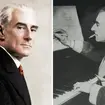Maurice Ravel: Pavane pour une infante défunte
Ravel was a master of orchestration, as is borne out by his ever popular arrangement of Mussorgsky’s famous set of piano pieces, Pictures at an Exhibition. But as his Pavane pour une infante défunte proves, the French composer was also a dab hand at reworking his own solo piano works for full orchestra.
The original piano version of the Pavane was composed in 1899 and dedicated to the Princesse Edmond de Polignac (otherwise known as Winnaretta Singer), a French-American musical patron who was also the daughter of the nineteenth-century sewing-machine magnate, Isaac Singer. The orchestral arrangement wasn’t premiered for another eleven years.
The strikingly morose title of the work belies its actual inspiration: far from being about death, Ravel stated that ‘When I put together the words that make up this title, my only thought was the pleasure of alliteration’. While it’s literally true that the French should be translated as ‘Pavane for a dead Princess’, Ravel was at pains to point out that it ‘Is not a funeral lament for a dead child, but rather an evocation of the pavane that might have been danced by such a little princess as painted by Velázquez’. His comments went largely unheard, though; even today, many believe the piece to have a quite different meaning from the one the composer intended.
Recommended Recording (Original Version)
Angela Hewitt (piano). Hyperion: CDA 673412.
Illustration: Mark Millington




















